Q
What is the Fuel Consumption of Perodua Myvi?
The fuel consumption of different versions of the Perodua Myvi varies, and the actual fuel consumption may be affected by factors such as driving habits and road conditions. According to the official combined fuel consumption data, the official combined fuel consumption of the 1.3L displacement models is 4.5L/100km. For example, the 2023 Perodua Myvi 1.3 G with PSDA and the 2023 Perodua Myvi 1.3 G fall into this category. The official combined fuel consumption of the 1.5L displacement models is 4.7L/100km. Models like the 2023 Perodua Myvi 1.5 X, 2023 Perodua Myvi 1.5 H, and 2023 Perodua Myvi 1.5 AV all have this level of fuel consumption. Compared with some models in the same class, the Perodua Myvi has relatively economical fuel consumption performance, which can help car owners save a significant amount of fuel costs for daily commuting and long - distance driving.
Special Disclaimer: This content is published by users and does not represent the views or position of PCauto.
Related Q&A
Q
What mileage for MYVI spark plugs?
According to Perodua's official recommendation, the mileage for replacing the spark plugs of the Myvi is usually between 40,000 and 60,000 kilometers. The specific interval depends on the type of spark plugs used in the vehicle and the driving conditions. The original equipment generally comes with ordinary nickel - alloy spark plugs. If you upgrade to iridium or platinum spark plugs, the replacement interval can be extended to 80,000 - 100,000 kilometers.
It's worth noting that if you often experience difficulties with cold starts, unstable idling, or an abnormal increase in fuel consumption, it may be a sign of spark plug aging, and you need to have them checked in advance. The hot and humid climate in Malaysia can accelerate the wear of spark plug electrodes. It is recommended to check the condition of the spark plugs during regular maintenance. At the same time, use original or equivalent - quality accessories that meet the specifications of the Myvi engine (such as the heat range). Inferior spark plugs may lead to a decrease in ignition efficiency and even damage the ignition coil.
For the turbo - charged Myvi X version, since the engine operates at a higher temperature, it is recommended to shorten the replacement cycle by about 20% to ensure optimal performance.
Q
What is the NCAP rating of Perodua Myvi?
The Perodua Myvi has achieved a 5-star rating in the ASEAN NCAP (ASEAN New Car Assessment Programme) tests. This result showcases its excellent performance in terms of safety features. The specific test items include adult occupant protection, child occupant protection, and safety assist systems. The Myvi is equipped with multiple safety features such as dual airbags, an ABS anti - lock braking system, an EBD electronic brake - force distribution system, and a Vehicle Stability Control (VSC) system. All these features have helped it score high in the crash tests.
For Malaysian consumers, choosing a vehicle with a high NCAP rating is very important as it is directly related to the safety guarantee during daily driving. The rating criteria of ASEAN NCAP are similar to those of other NCAP organizations globally, but it pays more attention to the actual road conditions and driving habits in Southeast Asia, thus having greater regional reference value.
Apart from the Myvi, there are also other models from different brands in the Malaysian market that have achieved a 5 - star rating. When purchasing a vehicle, consumers can compare the safety features and test results of different models to ensure they select the vehicle that best suits their needs.
Q
How many spark plugs are in Myvi?
The Perodua Myvi has achieved a 5-star rating in the ASEAN NCAP (ASEAN New Car Assessment Programme) test, which showcases its excellent performance in terms of safety features. The specific test items include adult occupant protection, child occupant protection, and safety assist systems. The Myvi is equipped with multiple safety features such as dual airbags, an ABS anti-lock braking system, an EBD electronic brake-force distribution system, and a Vehicle Stability Control (VSC) system, all of which have earned it high scores in the crash tests.
For Malaysian consumers, choosing a car model with a high NCAP rating is crucial as it directly relates to the safety assurance in daily driving. The rating criteria of ASEAN NCAP are similar to those of other NCAP organizations globally, but it pays more attention to the actual road conditions and driving habits in Southeast Asia, making it more regionally relevant. Besides the Myvi, there are other car models from different brands in the Malaysian market that have also received a 5-star rating. When purchasing a car, consumers can compare the safety features and test results of different models to ensure they select the vehicle that best suits their needs.
Q
Is myvi a reliable car?
The Myvi is a reliable car. Judging from its sales performance, the Myvi has been the best - selling car model in Malaysia from 2005 to 2014. As of now, its cumulative sales have reached 1,491,765 units. In 2024, it remains the best - selling hatchback in Malaysia and is very popular among consumers. In terms of product characteristics, it offers high cost - effectiveness. The price ranges from RM 46,500 to RM 59,900, and it comes with a rich set of features. It has low fuel consumption, being equipped with a 1.3L or 1.5L Dual VVT - i engine, and the official minimum fuel consumption is 4.5L per 100km. In terms of space, as a B - class hatchback, it has reasonable body dimensions. The rear seats can be folded down, making it highly practical. In terms of safety, the current model is equipped with advanced safety features such as Perodua Smart Drive Assist (PSDA). So, whether it's the market's recognition or its own characteristics, they all indicate that the Myvi is a reliable car.
Q
How much is myvi fuel consumption?
As one of the most popular national cars in Malaysia, the fuel economy of the Perodua Myvi varies depending on the model and driving conditions. According to official data, the fuel consumption of the latest Myvi in mixed conditions is about 5.3 to 5.6 liters per 100 kilometers (for the 1.5L engine version), which means it can travel about 18 to 19 kilometers per liter of gasoline. The 1.3L engine version may be even more fuel - efficient. The actual performance is affected by driving habits, road conditions, and the vehicle's maintenance status. For example, frequent rapid acceleration or driving in congested urban areas can significantly increase fuel consumption.
It is recommended that car owners regularly check the tire pressure, replace the air filter, and use the recommended engine oil to optimize fuel economy. Additionally, the Myvi has a fuel tank capacity of 36 liters, and theoretically, it can have a cruising range of about 600 kilometers when the tank is full.
For car owners who want to save more fuel, they can try some economical driving techniques such as smooth acceleration and anticipating road conditions to reduce sudden braking. These methods are applicable to all fuel - powered vehicles, which can not only reduce the cost of using the car but also reduce mechanical wear.
Q
How many Litres is a MYVI fuel tank?
The fuel tank capacity of the Perodua Myvi varies slightly depending on the model. The first - generation Myvi (2005 - 2011) had a fuel tank capacity of 40 liters. For the second - generation (2011 - 2017) and third - generation (2017 to present) Myvi, the fuel tank capacity increased to 36 liters for the 1.3L models and 40 liters for the 1.5L models. This design is to balance the fuel - economy requirements of different engine displacements. Malaysian car owners should note that the fuel tank capacity directly affects the driving range. Usually, a 1.5L model can travel about 500 - 600 kilometers on a full tank under combined driving conditions, which specifically depends on driving habits and road conditions. It is recommended that car owners regularly check the fuel system and maintain good driving habits to optimize fuel consumption. Meanwhile, it should be noted that the Myvi only needs to use RON95 gasoline and there's no need to use higher - grade fuel. This can not only meet the daily commuting needs but also save fuel costs.
Q
How many cylinders are in the MYVI?
As one of the most popular national cars in Malaysia, the engine configurations of the Perodua Myvi vary according to different years and versions. Currently, the mainstream models are equipped with two types of Dual VVT - i four - cylinder naturally aspirated engines, namely the 1.3L (1NR - VE) and 1.5L (2NR - VE). Therefore, all Myvi models feature a four - cylinder design. This four - cylinder layout ensures smooth power delivery while taking fuel economy into account, making it highly suitable for the urban road conditions in Malaysia.
It's worth mentioning that four - cylinder engines, due to their simple structure and low maintenance costs, are widely used in B - segment models in the local market. For example, the Proton Saga and Honda City also adopt a similar layout. The 1.5L version of the Myvi can output 102 horsepower and 136 Nm of torque. Coupled with its lightweight body design, it can offer a well - balanced performance whether driving on the congested streets of Kuala Lumpur or cruising on the highway.
For readers who want to learn about engine technology, they can note that the Dual VVT - i system used in the Myvi can intelligently adjust the valve timing. This technology shared by Toyota helps to improve fuel efficiency by about 15%. That's why the Myvi has remained one of the most fuel - efficient cars in Malaysia for years.
Q
Are Myvi and vios the same engine?
Some models of the Myvi and the Vios use the same engine. Daihatsu and Perodua have a joint - venture engine production plant in Negeri Sembilan, Malaysia, which provides power for multiple models including the Vios. Some models of the Vios and the Myvi are equipped with the 1.5L Dual VVT - i engine. This engine features high efficiency, reliability, and economy. Although its power is not extremely strong (the official 0 - 100km/h acceleration time of the Myvi 1.5 is 10.2 seconds), its low fuel consumption and durability are well - loved by consumers. However, these two cars have different positioning and market targets. Even if they share the engine platform, there are differences in vehicle tuning, configuration, and the overall driving experience.
Q
What kind of gearbox is Myvi?
The Myvi is equipped with a Dual Mode CVT (D-CVT) transmission, which is a dual-mode continuously variable transmission. Compared with traditional CVT transmissions, it has an additional gear for high-speed driving, which helps the vehicle achieve better fuel efficiency.
In daily driving, this transmission drives the vehicle in CVT mode. Thanks to the operation of the steel belt, the vehicle moves smoothly and linearly, enhancing comfort. What makes the D-CVT special is that it automatically switches to the gear mode when driving at high speeds. Different from CVT transmissions of other brands, when driving at high speeds, the engine speed of vehicles with ordinary CVT transmissions will increase, the engine noise will get louder, and the fuel consumption will rise. Moreover, the power will decline after exceeding the maximum horsepower speed. However, after the gear of the D-CVT engages, the engine speed decreases, allowing the engine to maintain a reasonable speed and providing the vehicle with continuous and abundant power.
Q
Does Myvi use CVT?
Yes, the Perodua Myvi does use CVT (Continuously Variable Transmission) technology in some models, especially the newer ones. For instance, the third-generation Myvi, launched in 2017, and its subsequent versions are equipped with D-CVT (Dual Mode Continuously Variable Transmission) to offer a smoother driving experience and better fuel efficiency. CVT technology optimizes engine performance through continuously variable gear ratios. Compared with traditional automatic transmissions, it can adapt to driving conditions more flexibly, thereby enhancing overall driving comfort. However, earlier Myvi models may have used a traditional 4-speed automatic transmission. So, whether a specific model is equipped with a CVT needs to be confirmed based on the model year and configuration. For Malaysian consumers, the advantages of CVT lie in its smoothness and fuel - saving performance during city driving, which is very suitable for the common local traffic conditions. But if you're looking for more direct power feedback, some drivers may prefer the manual transmission version. If you're considering buying a Myvi, it's recommended to check the official specifications or consult a dealer to confirm the transmission type. You can also take a test drive to see if the actual performance of the CVT meets your driving preferences.
Latest Q&A
Q
Is there a recall on 2019 Kia Optima engines?
Regarding the engine recall issue for the 2019 Kia Optima, there's currently no official recall announcement specifically targeting the Malaysian market. However, looking at international records, certain overseas markets did see recalls for the 2019 Optima due to potential engine faults – think issues like bearing wear in Theta II GDI engines, which could potentially lead to stalling or even fire risks. If you're a Malaysian Optima owner, I’d strongly suggest heading to Kia Malaysia’s official website, finding their recall check page, and plugging in your Vehicle Identification Number (VIN) to see if your ride is affected. Or, just swing by your nearest authorized service center for a free inspection – better safe than sorry.
It’s worth noting that Hyundai Motor Group implemented an extended warranty policy worldwide for Theta II engine concerns. For some models, the warranty coverage for engine-related components can be extended up to 15 years or 200,000 kilometers, whichever comes first. That’s a solid demonstration of the brand taking responsibility for its customers.
For Malaysian owners, a proactive step during regular maintenance is to specifically request a check on the engine's condition – keeping an eye on oil loss and any unusual noises is key for preventing potential problems. Also, it’s a good idea to stay updated on any service campaigns announced by local Kia dealers. Sometimes, these campaigns might offer free inspections or repairs for issues that aren’t officially classified as recalls but are still worth addressing.
If your vehicle starts showing symptoms like warning lights flashing, a noticeable drop in power, or excessive oil consumption, don’t delay – contact after-sales service immediately. Catching and addressing issues early can significantly reduce the cost of repairs down the line.
Q
How long will a 2019 Kia last?
The lifespan of a 2019 Kia largely depends on how well you maintain it, your driving habits, and Malaysia's road conditions. If you stick to the manufacturer's recommended maintenance schedule—like changing the oil every 6 months or 10,000 km and checking key components—drive sensibly, and avoid prolonged rough roads, these models typically clock 200,000 to 300,000 km or last over 10 years. Malaysia's hot and humid climate takes a toll on rubber parts (belts, bushings) and batteries, so it's smart to shorten inspection intervals for these and regularly clean the AC system to prevent mold growth. Hyundai-Kia's Theta II and Nu engines are pretty solid tech-wise, and paired with the 6AT transmission, the powertrain reliability holds up well against competitors—just don't skip that transmission fluid change.
Notably, Malaysia's COE system pushes some owners to prioritize long-term care, so I'd recommend using SP/GF-6A spec oil at authorized dealers or certified workshops. On the used market, 2019 Kias with full service records still hold decent resale value. If you're planning to keep it for the long haul, extended warranty might be worth considering. Durability varies a bit between models like the Cerato and Sportage due to their different purposes—SUVs like the Sportage might need more frequent suspension checks.
Q
Are Kia Optimas cheap to fix?
When it comes to the maintenance costs of the Kia Optima in Malaysia, this sedan falls right in the middle of the pack for midsize cars. Parts and labor are definitely easier on the wallet compared to luxury brands, though you might pay a bit more than some heavily localized Japanese models. The Optima's 2.0L and 2.4L naturally aspirated engines are pretty tried-and-true tech – basic services like an oil change with filters will set you back around RM300 to RM500, which lines up with what you'd pay for other cars in its class. Just a heads-up though: if you're looking at the 1.6T turbocharged version, expect those service bills to creep up a notch.
Kia's authorized service center network covers most major cities in Malaysia, so getting your hands on genuine parts is usually straightforward. That said, some non-critical components might need to be ordered in, so it's smart to stick to regular maintenance schedules to avoid bigger repair headaches down the line. If you're in the market for a used Optima, prioritize ones with a complete service history – and maybe look into third-party warranty plans to help cover any unexpected major repairs. All in all, the Optima is more budget-friendly to maintain than its European rivals, but you'll still need to set aside more than you would for a basic econobox. Choosing official or certified repair channels can really help keep those costs in check.
Q
What kind of engine is in the 2019 Kia Optima?
The 2019 Kia Optima hits Malaysian roads with two petrol engine choices: a 2.0-litre naturally aspirated Theta II MPI and a 1.6-litre turbocharged Gamma T-GDI. The 2.0L puts out 152 hp and 192 Nm of torque, perfect for folks who prioritize a smooth, laid-back drive. On the flip side, the 1.6T cranks things up with a meatier 180 hp and 265 Nm, catering to drivers who crave that extra zip when they hit the throttle. Both engines are mated to a 6-speed automatic gearbox, striking a decent balance between fuel efficiency and everyday comfort.
What’s neat about the Optima’s engines is the tech packed in—think direct injection and turbocharging (for the 1.6). These aren’t just buzzwords; they actually help boost power while keeping fuel consumption in check. For Malaysian drivers, both engines should handle our local climate and road conditions like a champ. Kia’s engines have also proven their durability over time, and maintenance costs won’t break the bank. If you’re really hungry for more power, there’s the Optima GT with a 2.0-litre turbo, but keep in mind that trim’s a bit of a rare find in Malaysia.
Q
What is a good year for Kia Optima?
If you're in the Malaysian market for a Kia Optima, the 2016 to 2018 model years come highly recommended. These iterations strike a solid balance between reliability, features, and driving dynamics. The 2016 facelift, in particular, brought a more stylish exterior, a nicer interior feel, and stepped-up safety kit like blind-spot detection and lane-keeping assist. Then, the 2017 and 2018 models refined the powertrain further, delivering an even smoother ride.
On top of that, used Optimas in Malaysia are pretty reasonably priced, and maintenance costs won't break the bank either. They're a solid pick if you're on a budget but still want the comfort of a midsize sedan. A quick heads-up though: when shopping used, always prioritize ones with complete service records. It's also smart to get a proper inspection through official channels to make sure the car's in good shape. Malaysia's hot and humid weather can be tough on a car's electronics and rubber parts, so keeping an eye on the cooling system and seals will definitely help keep it running longer.
View MoreRelated News
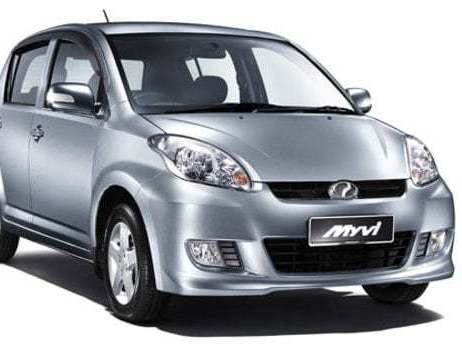
Since Its Launch in 2005, the Perodua Myvi has Cumulatively Sold Over 1,559,000 Units in 20 Years
WilliamMay 13, 2025
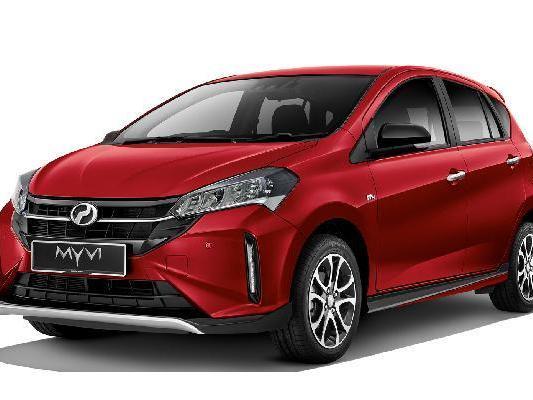
Perodua Myvi : A Value Choice for Worry-Free Car Purchases
LienMar 25, 2025
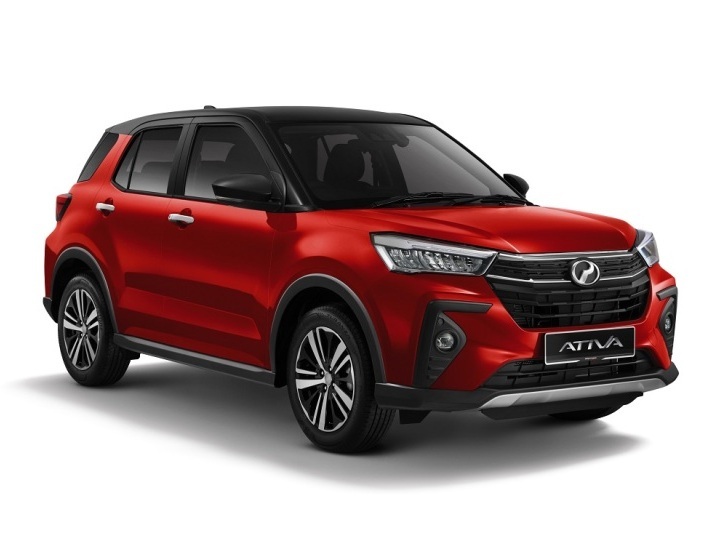
Perodua Ativa: A Comprehensive Analysis of the Advantages and Disadvantages of this Car
Kevin WongMar 13, 2025
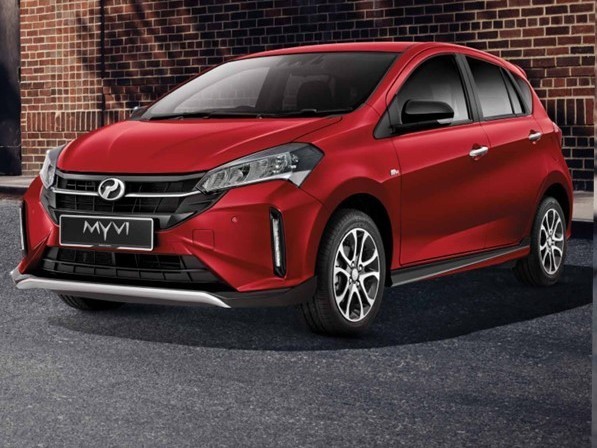
Own Perodua Myvi for less than RM 60,000: The best choice for city commuting?
LienOct 16, 2024

Perodua Axia Hits 790,000 Sales: What Makes It So Popular?
AshleyAug 12, 2025
View More












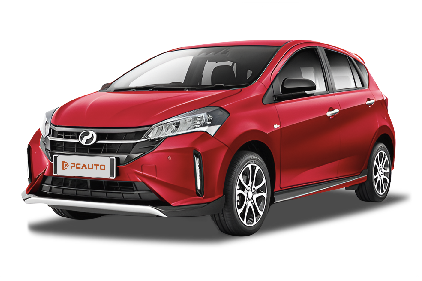

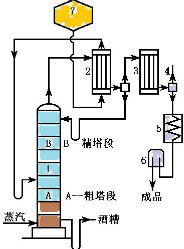



Pros
Cons